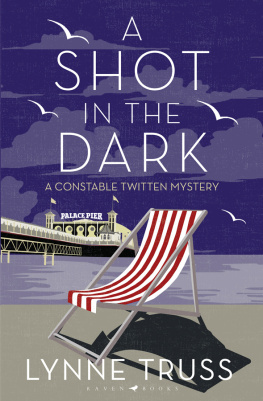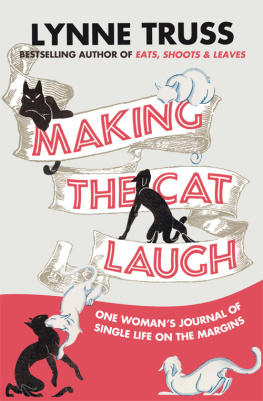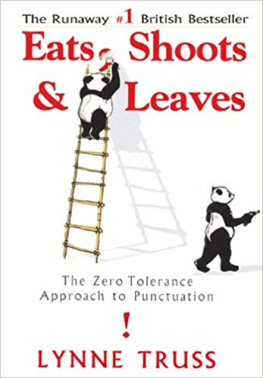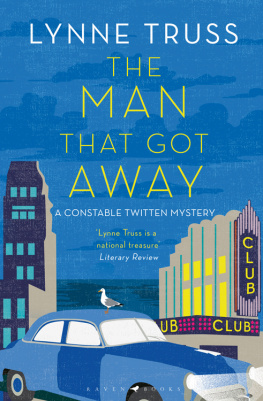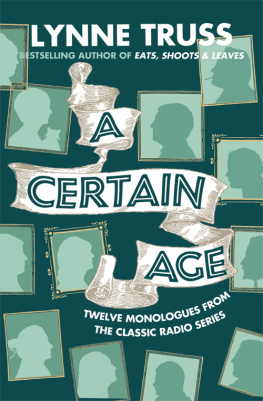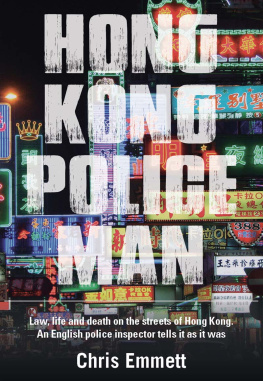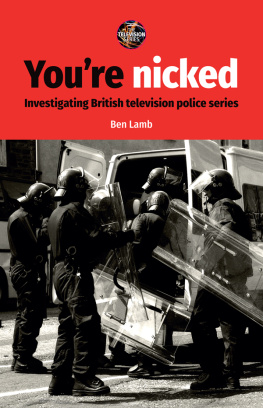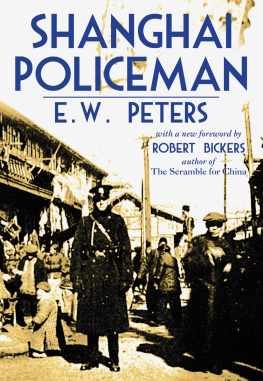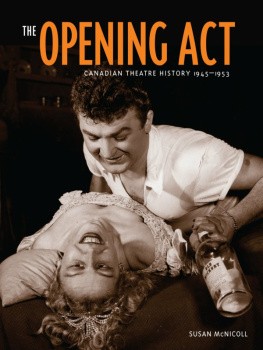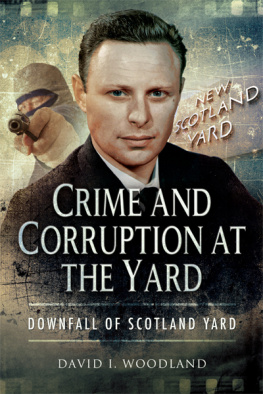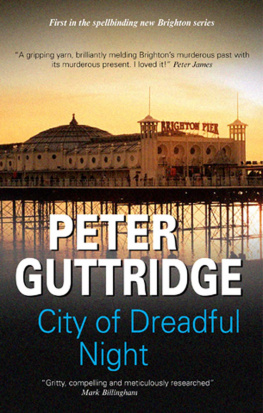A SHOT IN THE DARK
ALSO BY LYNNE TRUSS
FICTION
The Lunar Cats
Cat Out of Hell
A Certain Age
Going Loco
Tennysons Gift
With One Lousy Free Packet of Seed
NON-FICTION
Get Her Off the Pitch!
Talk to the Hand
Eats, Shoots & Leaves
Tennyson and His Circle
Making the Cat Laugh

RAVEN BOOKS
Bloomsbury Publishing Plc
50 Bedford Square, London, wc1b 3dp, uk
BLOOMSBURY, RAVEN BOOKS and the Raven Books logo are trademarks of Bloomsbury Publishing Plc
First published in Great Britain 2018
Copyright Lynne Truss, 2018
Lynne Truss has asserted her right under the Copyright, Designs and Patents Act, 1988, to be identified as Author of this work
All rights reserved. No part of this publication may be reproduced or transmitted in any form or by any means, electronic or mechanical, including photocopying, recording, or any information storage or retrieval system, without prior permission in writing from the publishers.
A catalogue record for this book is available from the British Library
ISBN: HB: 978-1-4088-9051-6; TPB: 978-1-4088-9052-3; EBOOK: 978-1-4088-9049-3
To find out more about our authors and books visit www.bloomsbury.com and sign up for our newsletters.
For Gavin
Lets hope you were right
Twas on a Monday morning,
The gas man came to call.
FLANDERS AND SWANN,
The Gas Man Cometh, 1953
Contents
The day of the notorious Middle Street Massacre dawned like many another in those happy, far-off days. In fact, any Brighton visitor hypothetically strolling seawards down Middle Street early on that June Saturday would have thought, How normal for the seaside!: the sparkling sea beyond, herring gulls wheeling and calling overhead, the comforting sound of a horse-drawn milk cart trundling along the seafront, the heady whiff of seaweed mixing intriguingly with warm sugar and peppermint from the humbug shop on the corner.
And then, having tripped over the freshly butchered corpse of an Italian gang member murdered outside the Hippodrome overnight, this hypothetical person would have chuckled, Ah, Brighton!, and continued his perambulations. Because it was all of a piece somehow, in those heady mid-century years; all part of the sheer breezy romance of the place: chips and vinegar wrapped in newspaper, larger-than-life Knickerbocker Glories, bloody torsos left in suitcases at the railway station.
Ask people in 1951 what they knew of Brighton and they would confidently list: crime, gangs; cockles and mussels in vinegar, shiny shingle, sunburned shoulders; more crime, more gangs; reprehensible Max Miller jokes, saucy postcards; then more crime, and more gangs. Clearly, the popular appeal of Graham Greenes Brighton Rock (and the film featuring the young Richard Attenborough as Pinkie Brown) had a very great deal to answer for.
Where were the police in all this? Well, if those same respondents had been required to think of a policeman in the context of Brighton in those benighted times, 85 per cent would have pointed either to the ineffectual constable in the Punch & Judy show (beaten violently to the ground with a big stick), or to that excellent fairground attraction, the Laughing Policeman, a paunchy animated doll in a glass-sided box that stood less for maintaining law and order, more for shrieking, AAAHHH-ha-ha-ha, Ha-ha-ha-hah-haah!
All this was about to change, however. That famous Saturday in June saw a new star appear in the Constellation of the Helmet. His name was Inspector Steine.
From now on, anyone asked about the Brighton Constabulary would picture something new: not a puppet begging for its life while receiving blows to the side of its head; nor a sinister dummy roaring dementedly at a private joke; but a real man a tall, slender, dignified grey-haired man, in fact, with blue eyes and a strikingly thoughtful far-away expression. A man about whom a middling British black-and-white film would be released in 1953, and several slapdash biographies would later be written.
In the years following, this man would come to represent the Brighton Police in a new way in a way that said, Come to this town by all means, have fun, enjoy yourselves; get drunk, throw up; copulate under our stately piers like beasts of the field, if you must; but dont commit crime, matey, not on my patch.
He was no Laughing Policeman, this paragon. In fact, it was a foolish person who dared even to mention the Laughing Policeman in his stern, unsmiling presence. All of the biographies of Inspector Steine (pronounced Steen, incidentally) detailed how one of his first acts on arrival in Brighton in April 1951 was to have all the Laughing Policemen in the penny arcades confiscated in early-morning raids, surgically dismantled and destroyed in bonfires behind the police station.
This act of authorised vandalism naturally caused ructions with the arcade owners, but Steine was above such concerns. If there was one thing about post-war Britain he abominated, it was the systematic inculcation of disrespect for the appointed guardians of the public.
Yes, Inspector Steine, formerly of the City of London constabulary, had arrived in Brighton with a mission. Of police corruption there would be no more. Of violent gangs with flick-knives there would be no more. Of mispronouncing his name there would be no more. And of Laughing Policemen well, within days there was nothing remaining of that ghoulish Marionette Division beyond piles of ash and melted plastic with blackened springs and levers sticking out.
A little film was made by Path News: The Bonfire of the Effigies. This rare and disturbing newsreel is honestly worth watching. It substantiates the legend that when the last (and greatest) Brighton Laughing Policeman was put to the flame, its body thrashed, it stopped laughing, and when it fell forward, the flames literally wiped the smile from off its face.
Now, to return to the events of Middle Street: while it truly was commonplace for people to trip over lifeless villains in Brighton at this time, the corpse discovered on 9 June 1951 was special for two reasons. First, the dead man had not been sliced, stabbed, skewered, mutilated or otherwise dispatched with a blade. He had been shot, twice, from behind. Second, he was no expendable journeyman gangster; he was Frankie G, a junior member of the Giovedi family, and therefore ranked as underworld aristocracy.
The Giovedis owned various legitimate restaurants in the town while also running very lucrative extortion and gambling rackets, and the teenaged Frankie G was the apple of their collective eye. An ambitious, illiterate and cocky boy, he performed his hoodlum work with a passion especially when it came to threatening people or roughing them up. Frankies doting parents regarded him as a trainee criminal psychopath of pleasing potential, and his death at such a tender age (sixteen) was devastating. For his next birthday, they had planned to give him Worthing.
Oh, Frankie G! My Frankie G! each of them wailed, when they were brought the news in their modest flat upstairs from their Old Neapolitan restaurant in Preston Street. They were so upset that they briefly stopped counting the heaps of notes, coins and IOUs that had been delivered by henchmen to their drop-box overnight.
Mama! wailed Papa.
Papa! wailed Mama.
Young Frankie had been a model son. He had loved his mamas cooking! He had loved his hokey-pokey ice cream! He had loved cutting peoples thumbs off! He had seen

